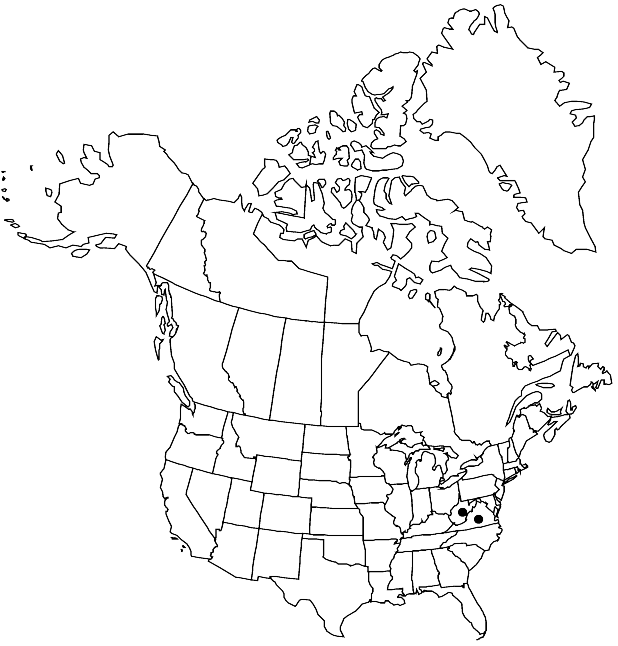Boechera serotina
Harvard Pap. Bot. 12: 249. 2007.
Biennials; short-lived; sexual; caudex not evident. Stems usually 1 per plant, arising from center of rosette near ground surface, 4–10 dm, glabrous throughout. Basal leaves: blade obovate to oblanceolate, 5–20 mm wide, margins dentate, not ciliate, surfaces glabrous or subapically puberulent, trichomes simple, 0.1–0.2 mm. Cauline leaves: 30–80, not concealing stem; blade auricles absent, surfaces of distalmost leaves glabrous. Racemes 70–150-flowered, multi-branched. Fruiting pedicels divaricate-ascending to horizontal, straight or gently recurved, 6–15 mm, glabrous. Flowers divaricate-ascending at anthesis; sepals glabrous; petals white, 2.8–4 × 0.6–1 mm, glabrous; pollen ellipsoid. Fruits divaricate-ascending to widely pendent, not appressed to rachis, not secund, straight or slightly curved, edges parallel, 4.3–7.9 cm × 1.5–1.8 mm; valves glabrous; ovules 30–42 per ovary; style 0.1–0.2 mm. Seeds uniseriate, 1.2–1.7 × 0.7–1 mm; wing continuous or, sometimes, distal (rarely absent), 0.1–0.2 mm wide. 2n = 14. Flowering Jul–Sep. Shale barrens and wooded slopes of crumbling shale; of conservation concern; 100–500 m; Va., W.Va.
Phenology: Flowering Jul–Sep.
Habitat: Shale barrens and wooded slopes of crumbling shale
Elevation: 100-500 m
Distribution

Va., W.Va.
Discussion
boechera serotina is unique among members of the genus in its highly branched inflorescences and late (summer–fall) anthesis. it is in the center for plant conservation’s national collection of endangered plants
of conservation concern
Selected References
None.